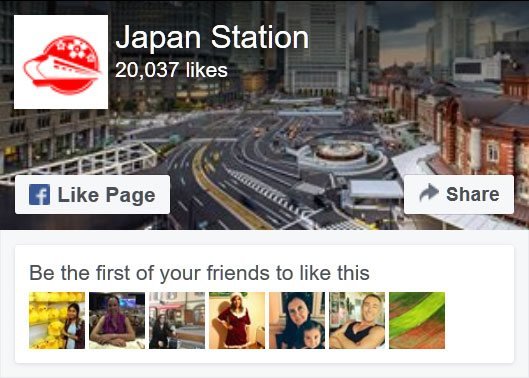Higashi Chaya-gai is a beautifully preserved historical area of Kanazawa with many traditional wooden buildings. This area was established in 1820 as an entertainment district for rich merchants and nobility.
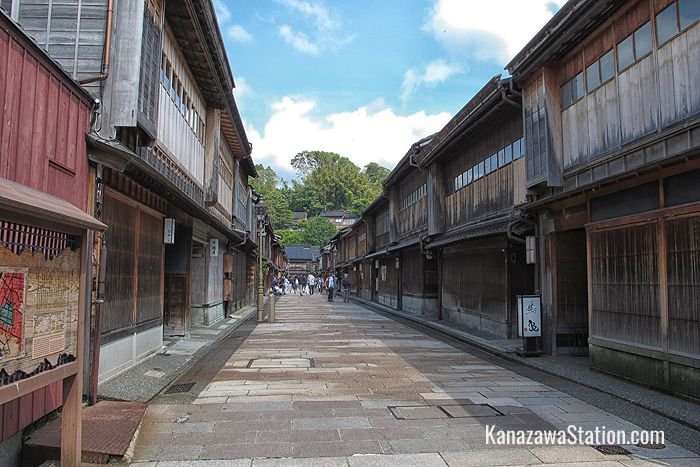
The wooden lattice fronted teahouses of Higashi Chaya-gai
The name Higashi Chaya-gai literally means “Eastern Teahouse District,” because the chaya, or teahouses, were where wealthy customers would be entertained by geisha with traditional music, dancing, and drinking games. Many of these buildings have today been converted into restaurants or souvenir craft shops, but there are two geisha teahouses that are open to the public during the day. In this article we will introduce Higashi Chaya-gai’s chief highlights.
Ochaya Shima is a historical geisha house which has been preserved as a museum and it is an essential stop when visiting this area. Here you can see how the geisha lived and worked and enjoy a cup of green tea with a sweet. The house is open daily from 9.00 – 18.00 and entry costs 500 yen. For more details see our article: Ochaya Shima Geisha House.
Kaikaro is a working geisha house that is open to the general public during the day. At night it is an exclusive house of entertainment for wealthy patrons only. However, this house does host some special geisha events that anyone can attend. This house is open to the public from 9.00 – 17.00 and entry costs 750 yen. For further details see our article: Kaikaro Geisha Teahouse.
Gold Leaf Sakuda sells many goods decorated with gold leaf, which is a traditional craft dating back 400 years in Kanazawa. At the main store you can take a tour of the factory, view the production process, and even try some gold leaf decoration yourself. The store is open from 9.00 – 18.00. For further details see our article: Gold Leaf Sakuda Main Store.
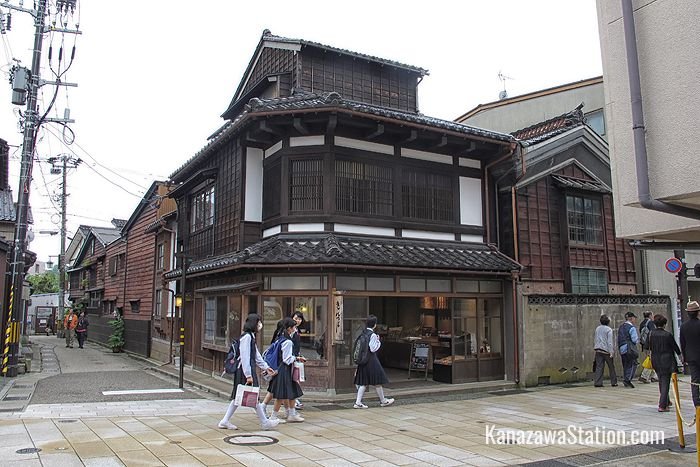
Kintsuba Nakataya
Kanazawa has a long tradition of sweet making which was first sponsored by the ruling Maeda family. These wagashi, or traditional sweets, developed together with the tea ceremony because the bitter tea is always served with something sweet. Kintsuba Nakataya is a traditional sweets shop in Higashi Chaya-gai which sells a range of such traditional confectionery.
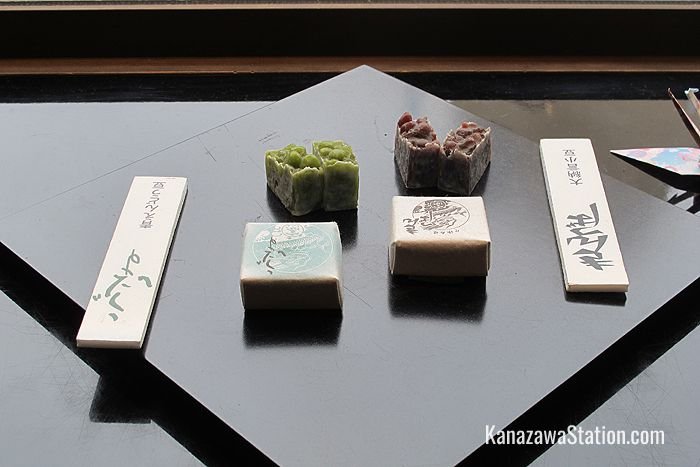
Kintsuba sweets made from adzuki beans
The shop’s specialty is kintsuba, a special confection of sweet adzuki beans wrapped in a wheat flour dough. Kintsuba is open from 9.00 – 18.00. Here is a map of the location.

Hakuichi gold leaf souvenir shop
A little further down the street from Kintsuba Nakataya is Hakuichi, a souvenir shop specializing in gold leaf products. This shop has become quite well known recently for selling ice cream coated in edible gold leaf. The gold leaf itself doesn’t have much taste, but it does look impressive and the ice cream is delicious. The shop is open from 9.00 – 18.00 and a gold leaf ice cream costs 891 yen including tax. Here is a map of the location.
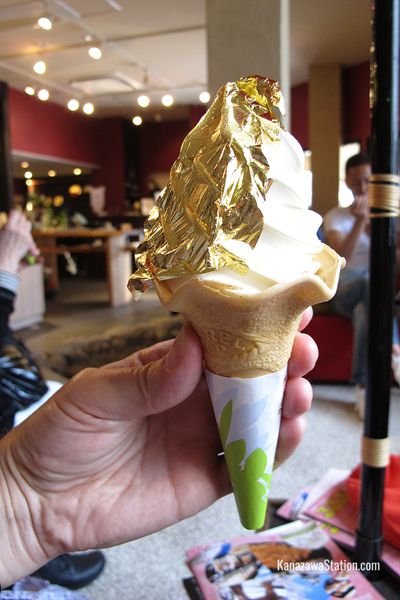
A taste of luxury with gold leaf ice cream
If you go down the narrow alleyway behind Hakuichi you can find a striking red building. This is Kanazawa Sushi, where you can learn to make oshi-zushi or pressed sushi. Pressed sushi is a local specialty made with a mold, that was traditionally made and eaten by the whole family on festival days.
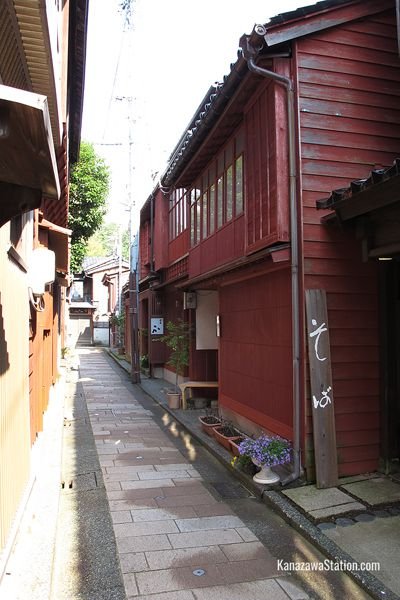
Kanazawa Sushi can be found in a red building down a narrow alleyway
In addition to sushi making lessons Kanazawa sushi also serves full meals featuring pressed sushi and other Kanazawa specialties such as jibuni, or duck soup. The sushi making lessons must be booked one day in advance, so ask a Japanese friend, tour guide, or hotel concierge to do that for you as the website is only available in Japanese. Kanazawa Sushi is open from 10.00 – 15.00. Here is a map of the location.
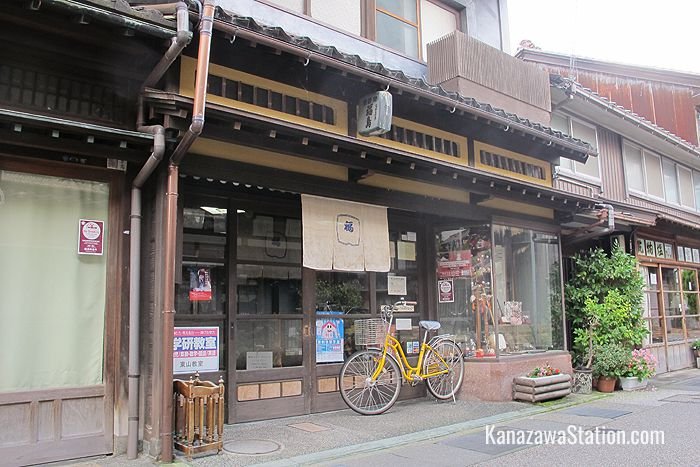
Fukushima Sangenten
If you are interested in traditional Japanese music then you may want to pay a visit to the Fukushima Sangenten shop (also called Shamisen no Fukushima). This is the only shop in the Hokuriku area that specializes in making and selling the shamisen, a three stringed instrument which is similar in appearance to the banjo. The shamisen is a beautiful instrument which geisha must learn to play to entertain their clients. For a small fee of 500 yen you will be served green tea and sweet on the 2nd floor of the shop, and there you can also try to play a shamisen yourself. The shop is open from 10.00 – 16.00 and closed on Sundays, national holidays, and the 2nd and 4th Saturdays of the month. Here is a map of the location.
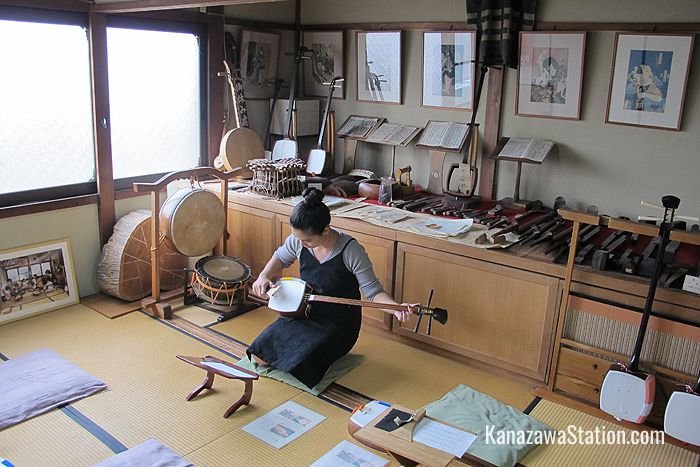
Enjoying the shamisen experience
The Utatsuyama District
Higashi Chaya-gai is very popular with tourists and so it can get very crowded. Wander a little further north however, and you will find yourself in the quiet streets of the Utatsuyama temple district. There are more than 50 temples and shrines in this area, as well as many other fine old buildings and so it is a lovely area for contemplative walking and simply seeing what you can find.
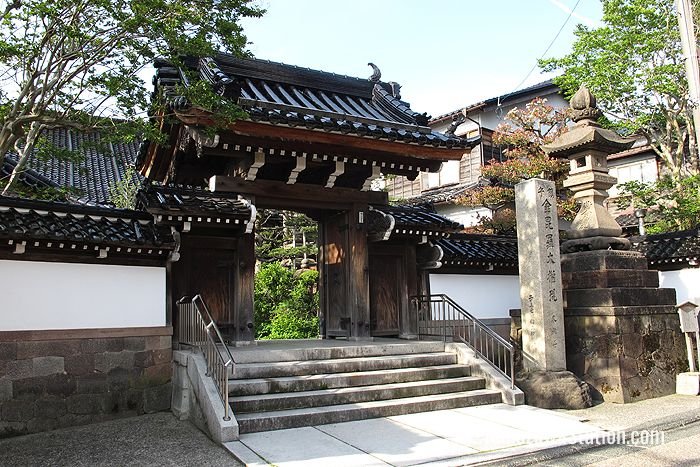
Entrance to Raikyoji temple
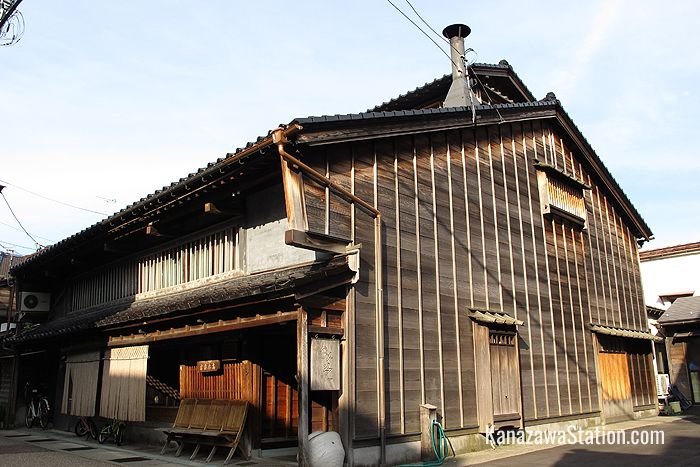
A traditional miso paste shop in the Utatsuyama district
When you have had enough of walking and sightseeing why not take a break at Café & Gallery Muku?
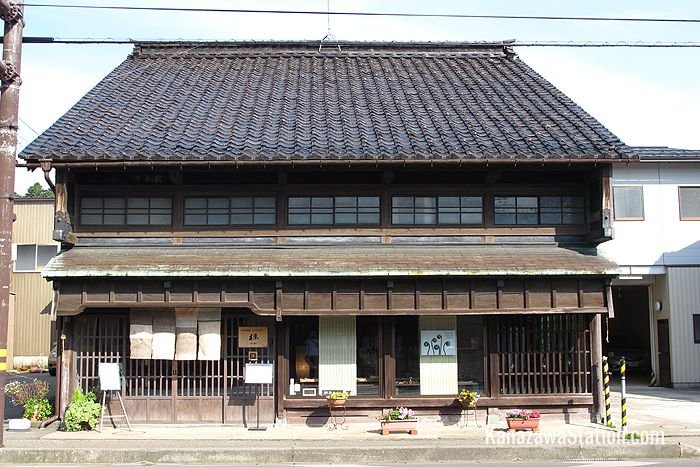
Café & Gallery Muku
The gallery and café occupy a renovated machiya, a traditional wooden townhouse, so it makes for an interesting spot in which to take a break and enjoy some refreshments. The gallery also exhibits local crafts and arts which could make for unique souvenirs. A cup of coffee will cost you 500 yen, or coffee with cake will cost you 800 yen. Muku is located on the edge of the Utatsuyama district on Higashiyama Street and is open from 11.00 to 17.00 and closed on Thursdays. Here is a map of the location.
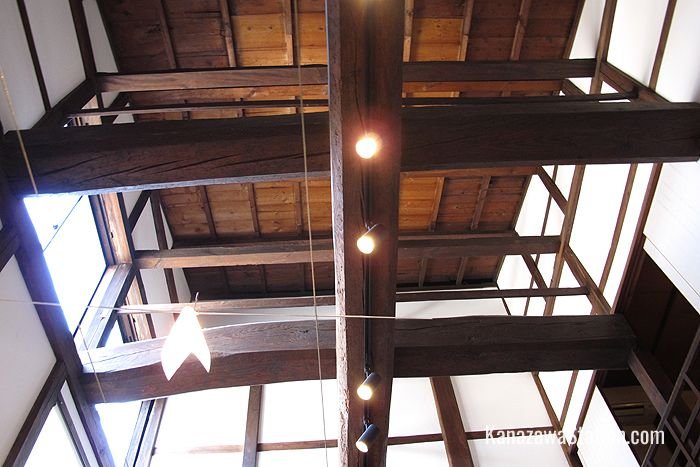
Inside Muku broad wooden beams support the high ceiling
Access
To get to the Higashi Chaya-gai district from Kanazawa Station take a Kanazawa Loop Bus to the Hashibacho bus stop. The bus takes 7 minutes and costs 200 yen. From Hashibacho bus stop, the Higashi Chaya-gai area is a 5 minute walk.
Article and original photos by Michael Lambe. All rights reserved.
